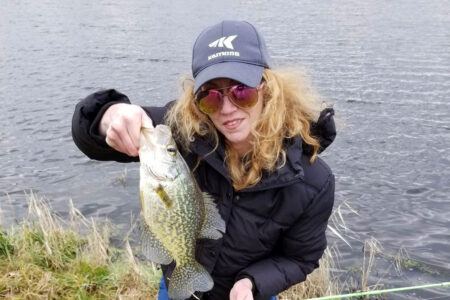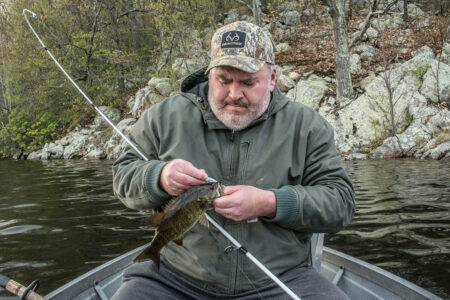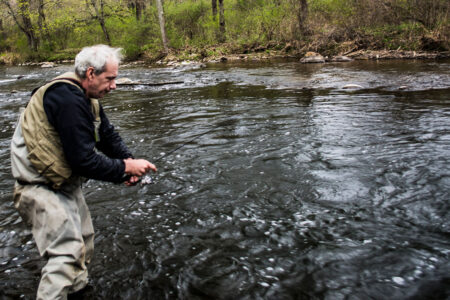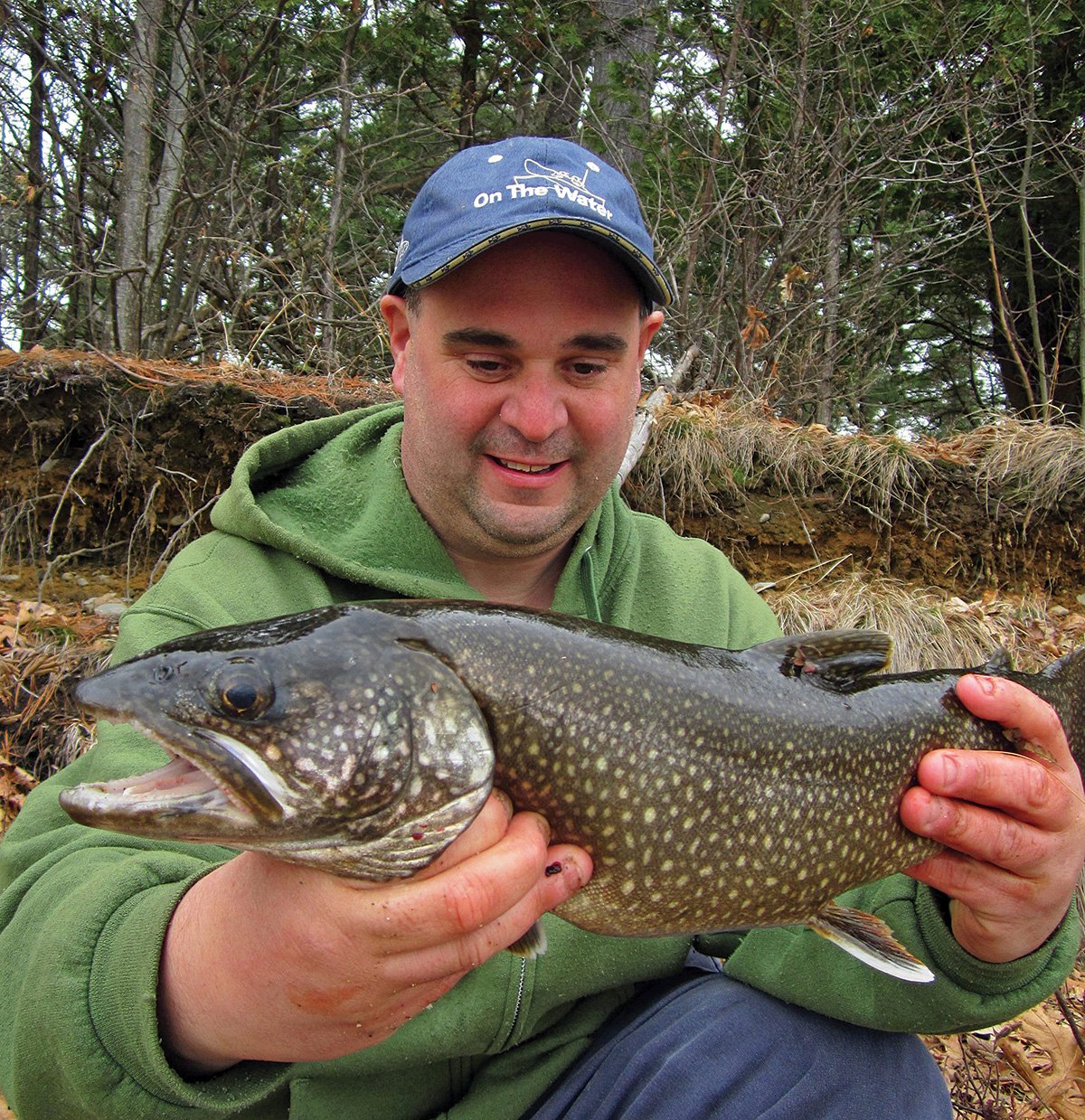
I love going to the surf as much as anyone chasing late season stripers heading home for the winter. However, Mother Nature can be unkind in the fall. Offshore storms, nor’easters and hurricanes can shut down the fishing for days and even a week. I’m not going to sit at home waiting for the dirty water to clean up. So instead of going to the surf I head to the sweetwater of Wachusett Reservoir to fish for, and hopefully catch lake trout.
Wachusett Reservoir closes for the season on November 30 providing there isn’t any ice on the lake. I usually start fishing it in late October right through the end of November. Unlike most local fisheries, the colder the water gets, the better the fishing becomes. Lake trout are a cold-water fish, and because of this they spend the summers in the deep water below the thermocline. As the water gets colder, lake trout are more willing to come into shallower water to feed. Since boating is not allowed at the reservoir, this increases the chances for us shore-bound optimists.
The big lake fishes best during the worst weather. If a late fall nor’easter falls on my day off from work, then you can guarantee I will be at the ‘Chu! I really believe that lake trout are one of the species of fish that become extremely active when the barometer is falling.
There are two ways to fish for lake trout: with bait or with artificial lures, namely spoons. Baitfishing is relatively simple. I set up my rig with a 3/4- to 1-ounce (non-lead) egg sinker above a 2-foot leader. At the business end I use a size 4 hook for medium shiners. Many Wachusett sharpies use a worm blower to put a little bit of air in the shiner to keep it off of the bottom. This set up is cast out as far as you can into deeper water. My strategy is to leave the bait for 15 to 20 minutes, and if I don’t get a hit I move the whole set up 20 or 30 feet down the shoreline. Even when I’m fishing bait, I still feel mobility is a key to success. If I’m using two rods with shiners (when I need a break from casting the spoon), I leap frog one rod past the other every 15 minutes or so, thereby covering a lot of shoreline.
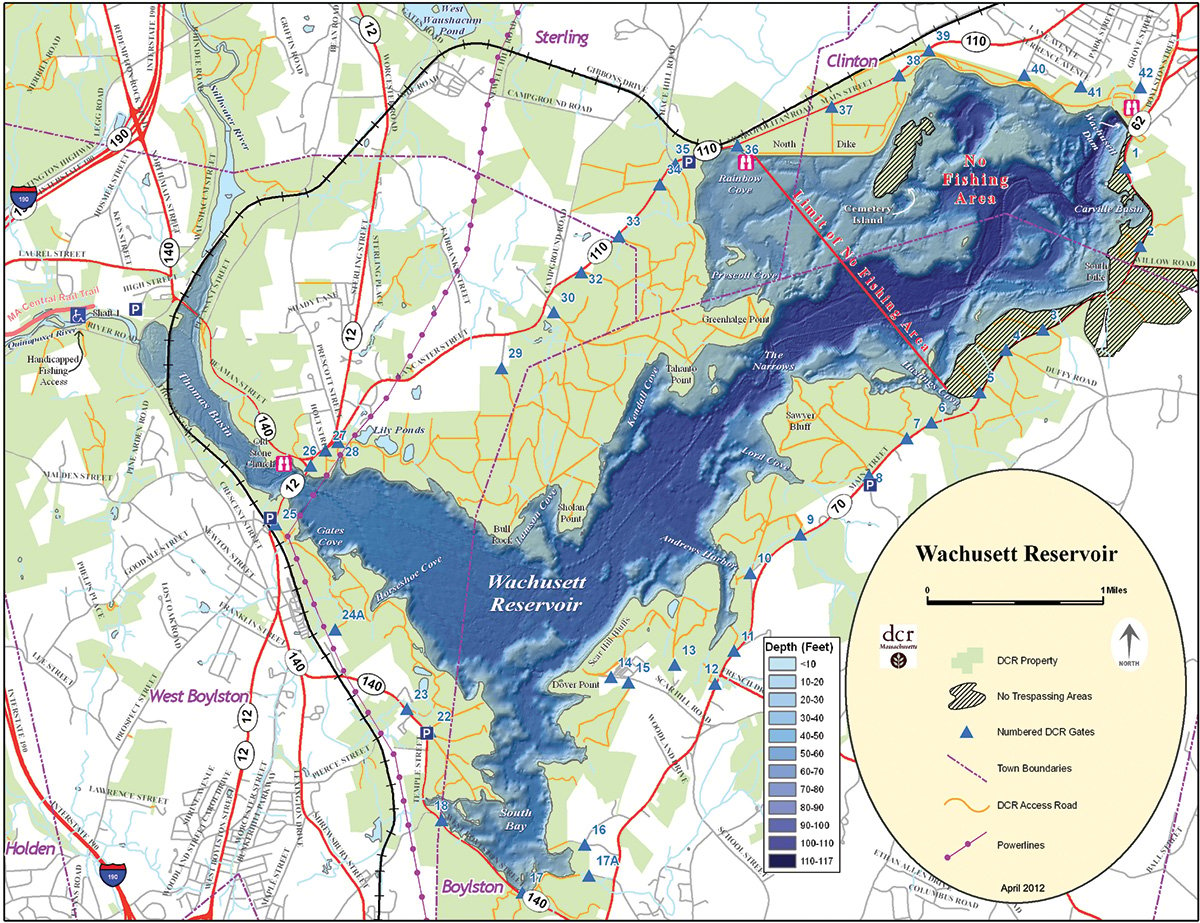
The other way to fish for lake trout is with spoons. Again, the strategy is simple; cast out the spoon as far as you can and let it sink to the bottom. Once you feel it hit the bottom start reeling in slowly. Sometimes I stop the retrieve so the spoon will sink back down. I have had success doing this, getting hits as I start reeling again. Effective sizes of spoons range from 5/8-1 ounce. Of course everyone has their favorite brand such as Little Cleo and Daredevle, but without question I have had the most success on Kastmasters. This could be just as much due to their effectiveness as the fact that I have a ton of confidence in them and use them more often than any other spoon.
Every year it seems as though one color will out-fish all the others. I’ve been told the blue and silver combo is the best, and I’ve also heard that landlocked salmon were keying on orange one year. Plain gold and firetiger are also popular colors. Basically, the color that works best is the one that you have had past success on and feel the most confident in using. For me personally, the color combination I have had the best luck on is the gold/maroon Kastmaster. I carry a couple different colors, but the gold/maroon is one I always make sure I carry a spare.
As for equipment, a long cast is paramount. Therefore, your longer rods will work. If you have a 7- or 8-foot light saltwater rod, that will work fine. I use the same rods that I use to chase schoolies in the spring. The reels I set up with either 12-pound mono or 20-pound braid. I prefer the mono for lures because I don’t have to worry about wind knots. That said, I know I’m losing some casting distance so to combat this I use a slightly bigger spoon. For my bait rod, I use my smaller bait-runner reels that I use for carp. This way I can leave the rod without fear of a trophy laker pulling it into the drink.
As much fun as it can be in hunting lakers, fishing Wachusett Reservoir can be difficult. The place is huge and success is far from guaranteed, but do not get discouraged. Striking out is part of the game when fishing the reservoir, and even the best fishermen with the most experience will sometimes go a couple outings without getting a fish. I know that many people have never caught a fish on spoons. It is easy to get discouraged. Once you get the first one, your confidence level will go up. You’re not going to catch one unless you keep casting, so keep trying.
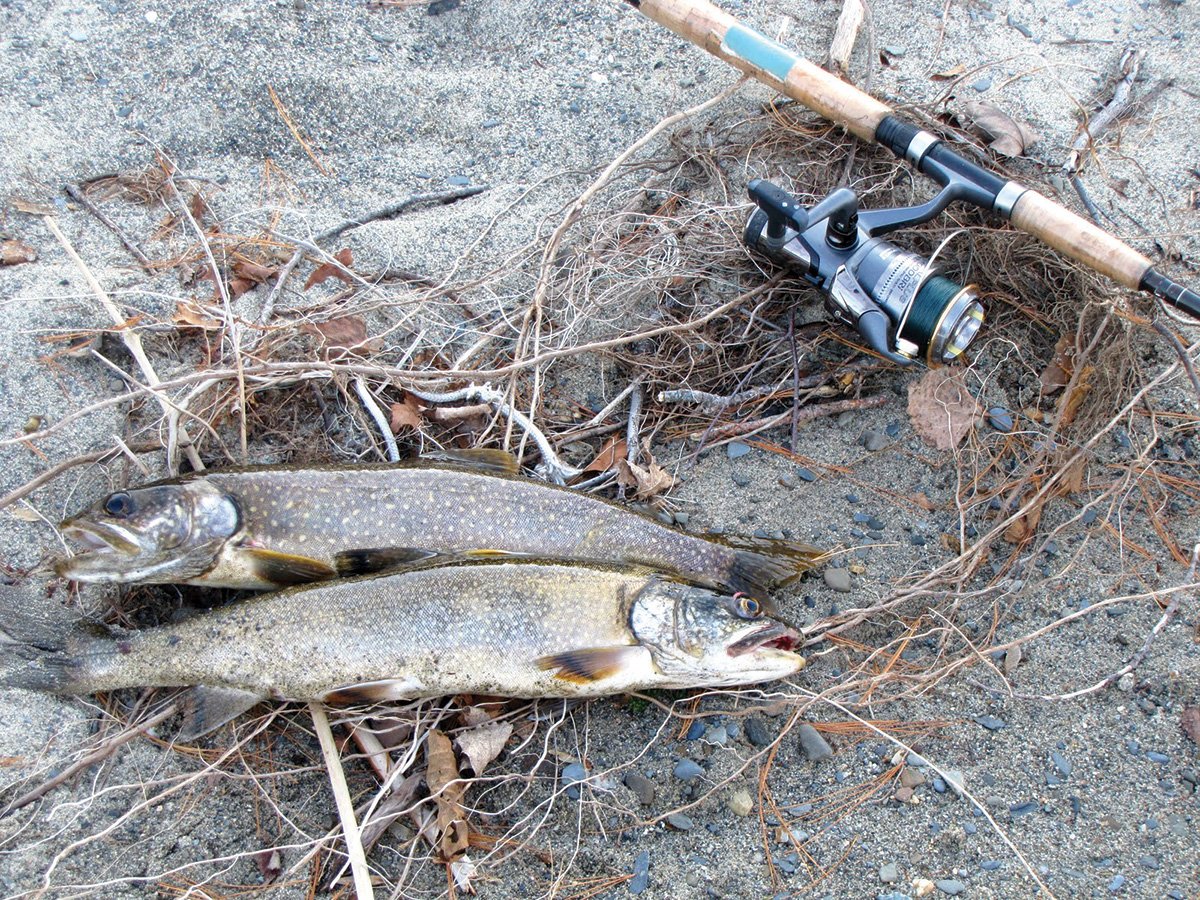
The key to upping your chances is to go with a game plan. Get a map of the lake and try to find places where deep water comes close to shore like near Gate 8. These spots are good places to start. Doing this before your trip is a good idea. Figuring out ahead of time where you plan on fishing will save you time better spent on the shore. Key points on the map are close contour lines indicating a steep drop-off. Also points that jut out into the lake may have deep water on one side or the other.
One of the more productive spots is also the easiest to fish: the Route 12 Causeway. This spot is fished hard because the access is so easy. That said, it fishes pretty well too. I’ve caught lake trout on both bait and spoons at the causeway. It is also a fine spot to catch small leapers (salmon) in the spring.
My plan of attack usually goes like this. I walk to a spot that I’ve caught fish before and fish it for a few hours in the morning. I almost always use two rods; one with live bait and the other with lures. Carrying a bucket of shiners through the woods for a mile or more can be tiring, but I do feel it doubles my chances of catching a fish. I’ll set up one rod with a shiner and work the shoreline in both directions casting spoons into the deep with the other. I’ll move the shiner every 15 minutes. I’ll do this for a couple hours sometimes covering half a mile.
If I don’t have sustained success at the first spot, I’ll come out of the woods and try a gate I have never tried before. Wachusett Reservoir is accessed by a series of gates, and fishing is allowed between gates 6 to 35. Sometimes I take a long walk to a new spot, other times I’ll take a shorter hike staying closer to the road. The key is just to learn something new. That something can be negative. I’ve walked over a mile before just to realize that “deep water” on the map was not within casting range. I file these tidbits away, making me a more educated Wachusett angler.
Few things are more satisfying than catching a lake trout from shore. There are only two places in the lower three New England states (Quabbin being the other) that an angler can catch lake trout. It can be hard work, but the reward is worth it. I’ve left Wachusett Reservoir completely frustrated and I’ve left grinning from ear to ear. There’s no question that catching lake trout is harder than catching striped bass but it is just as fun and sometimes more rewarding.
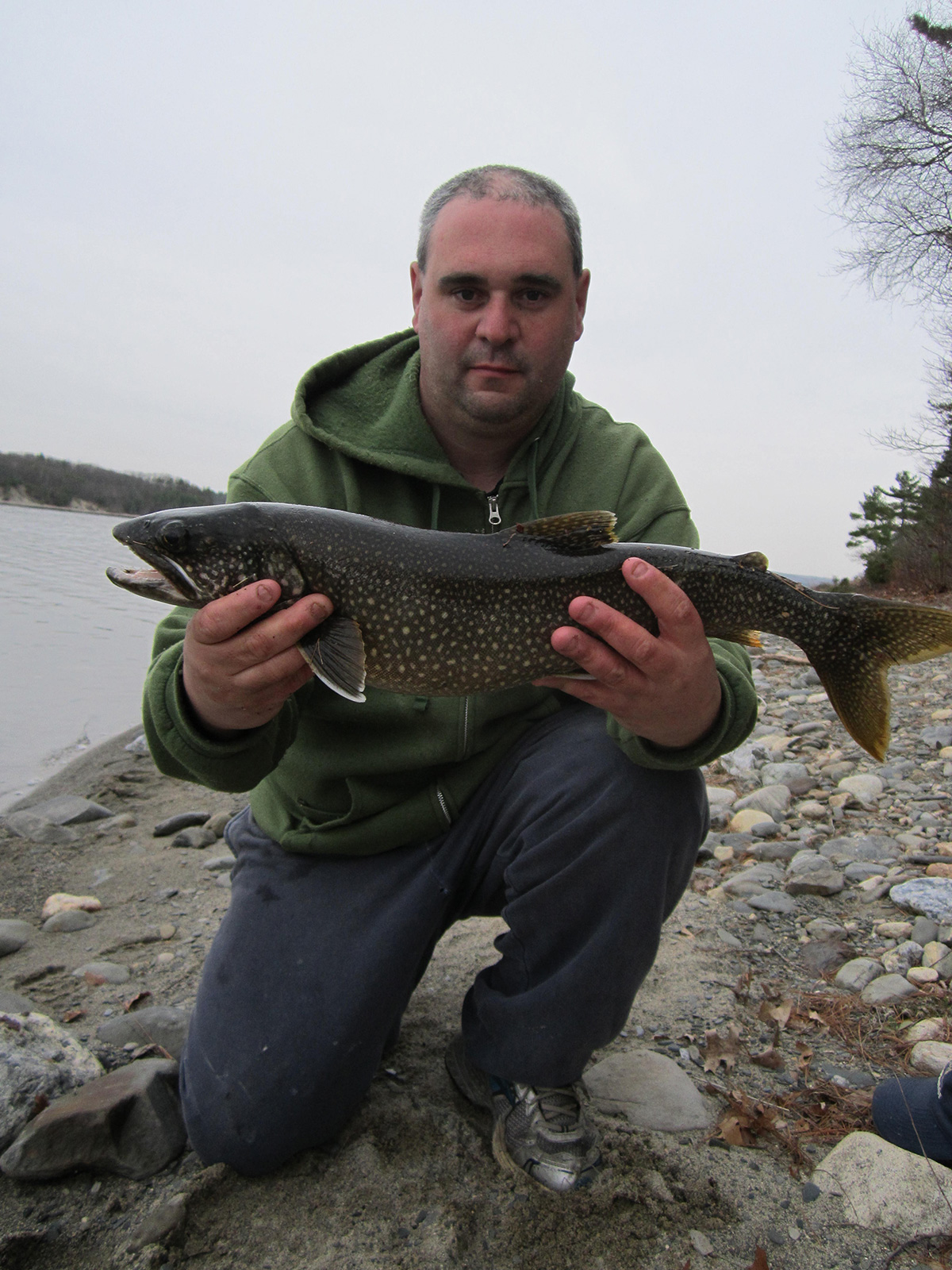
| LAKE TROUT REGULATIONS |
|---|
| Anglers are allowed to harvest three lake trout per day with no minimum size. The Wachusett/Sudbury/West Waushacum fishing season normally opens the first Saturday in April and closes November 30, but the DCR/DWSP may alter those dates depending on ice conditions. A Wachusett and Sudbury Reservoir Fishing Guide is available at: mass.gov/dcr/wachusettfish or by calling 508-792-7806. |
